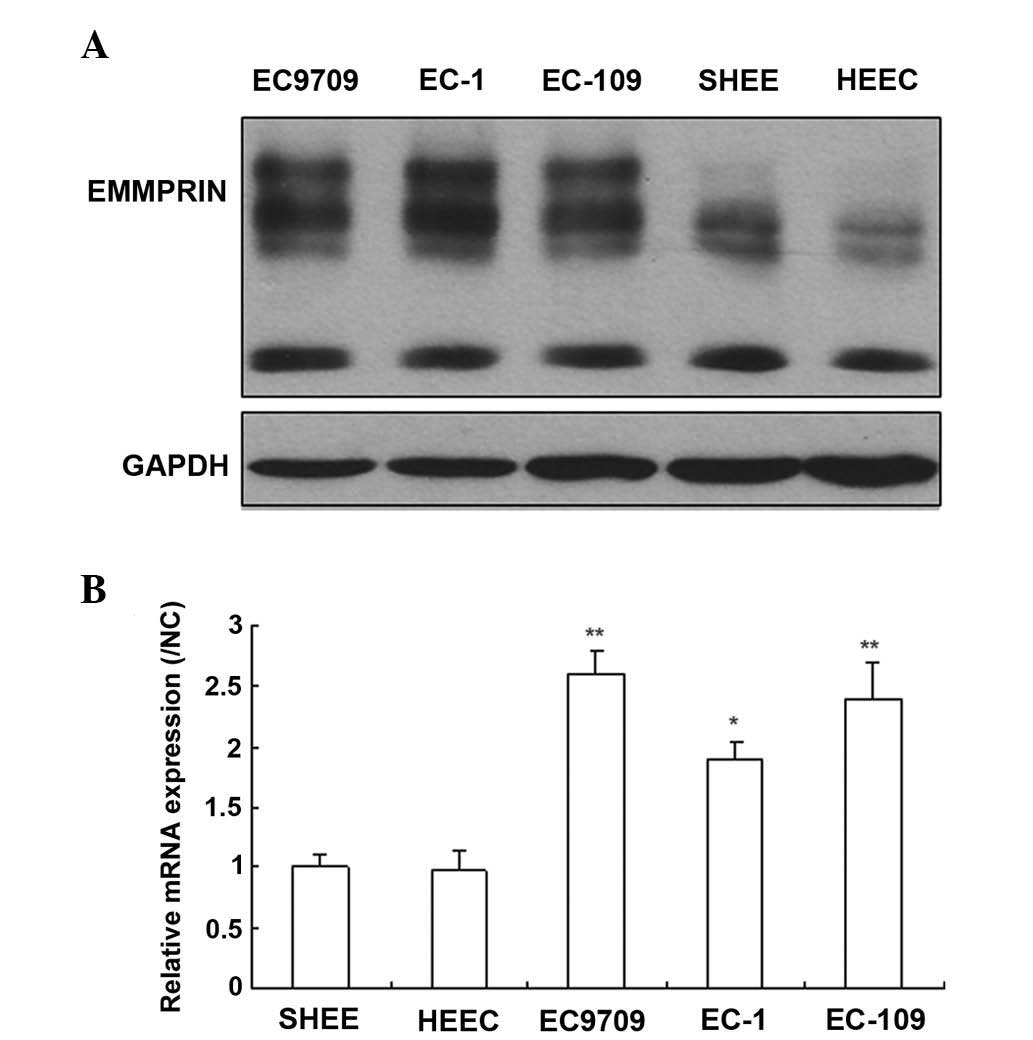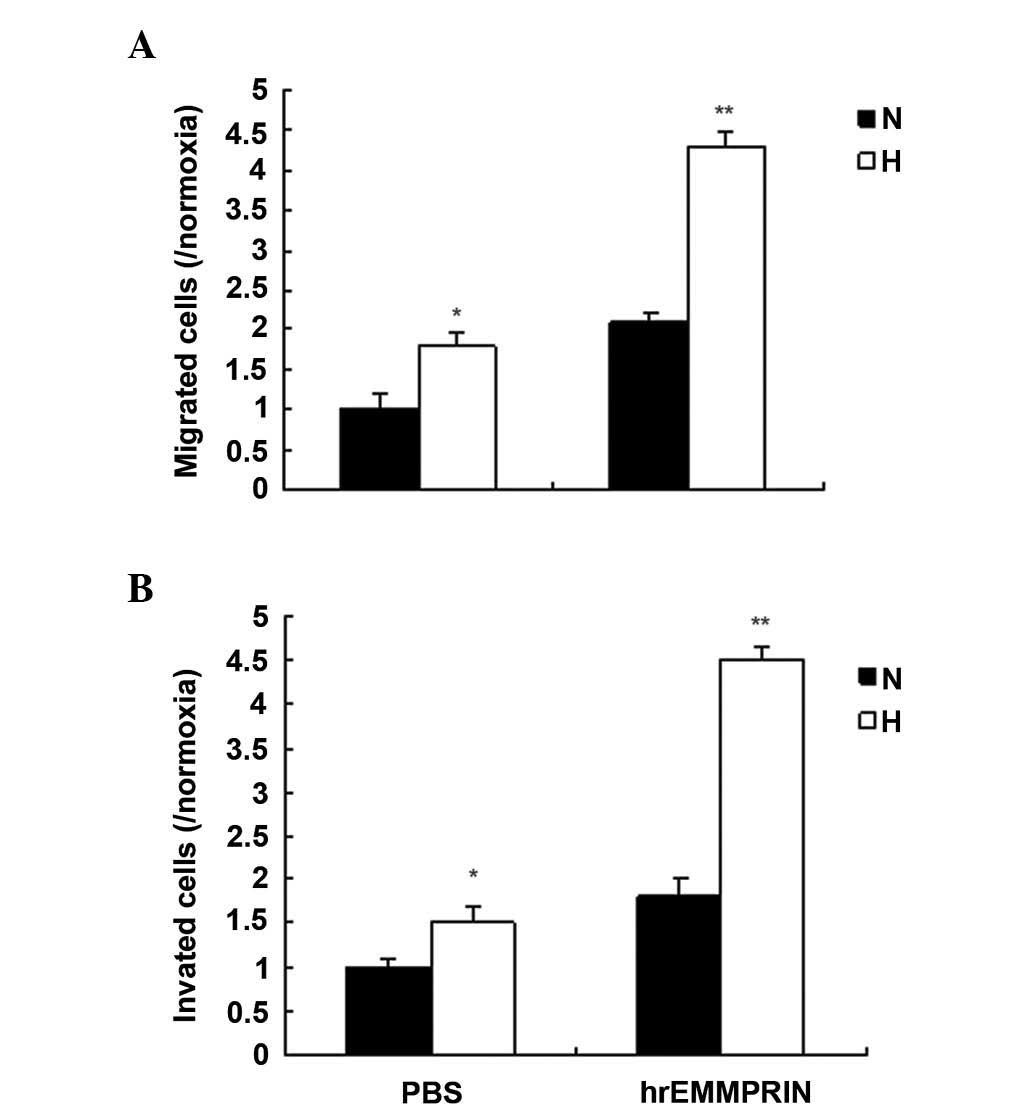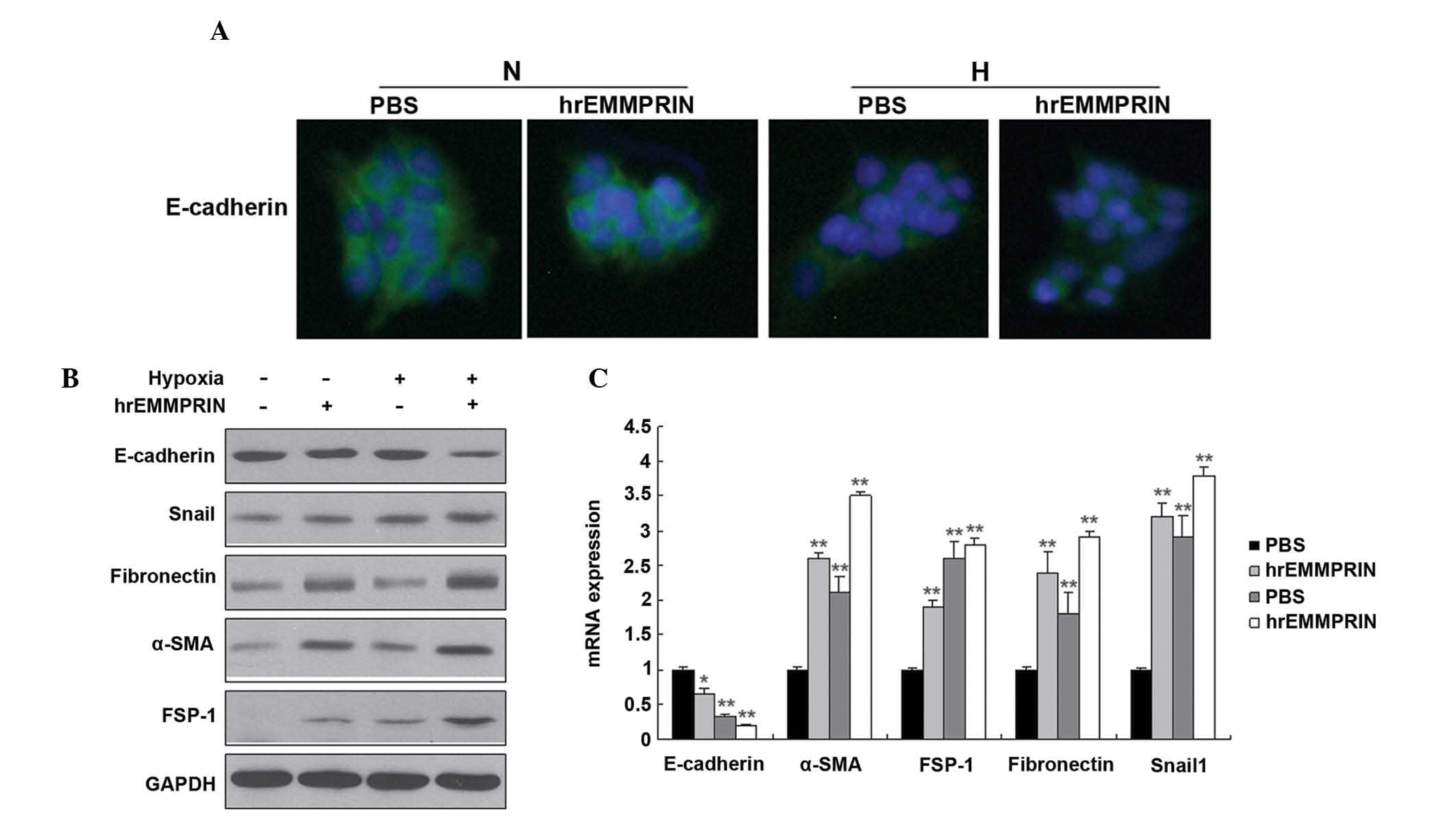|
1
|
Weidle UH, Scheuer W, Eggle D, Klostermann
S and Stockinger H: Cancer-related issues of CD147. Cancer Genomics
Proteomics. 7:157–69. 2010.PubMed/NCBI
|
|
2
|
Hao JL, Cozzi PJ, Khatri A, Power CA and
Li Y: CD147/EMMPRIN and CD44 are potential therapeutic targets for
metastatic prostate cancer. Curr Cancer Drug Targets. 10:287–306.
2010. View Article : Google Scholar : PubMed/NCBI
|
|
3
|
Kanekura T and Chen X: CD147/basigin
promotes progression of malignant melanoma and other cancers. J
Dermatol Sci. 57:149–54. 2010. View Article : Google Scholar : PubMed/NCBI
|
|
4
|
Toole BP and Slomiany MG: Hyaluronan, CD44
and Emmprin: Partners in cancer cell chemoresistance. Drug Resist
Updat. 11:110–21. 2008. View Article : Google Scholar : PubMed/NCBI
|
|
5
|
Iacono KT, Brown AL, Greene MI and Saouaf
SJ: CD147 immunoglobulin superfamily receptor function and role in
pathology. Exp Mol Pathol. 83:283–95. 2007. View Article : Google Scholar : PubMed/NCBI
|
|
6
|
Nabeshima K, Iwasaki H, Koga K, Hojo H,
Suzumiya J and Kikuchi M: Emmprin (basigin/CD147): Matrix
metalloproteinase modulator and multifunctional cell recognition
molecule that plays a critical role in cancer progression. Pathol
Int. 56:359–367. 2006. View Article : Google Scholar : PubMed/NCBI
|
|
7
|
Yurchenko V, Constant S and Bukrinsky M:
Dealing with the family: CD147 interactions with cyclophilins.
Immunology. 117:301–309. 2006. View Article : Google Scholar : PubMed/NCBI
|
|
8
|
Yan L, Zucker S and Toole BP: Roles of the
multifunctional glycoprotein, emmprin (basigin; CD147), in tumour
progression. Thromb Haemost. 93:199–204. 2005.PubMed/NCBI
|
|
9
|
Muramatsu T and Miyauchi T: Basigin
(CD147): A multi-functional transmembrane protein involved in
reproduction, neural function, inflammation and tumor invasion.
Histol Histopathol. 18:981–987. 2003.PubMed/NCBI
|
|
10
|
Szubert S, Szpurek D, Moszynski R, Nowicki
M, Frankowski A, Sajdak S and Michalak S: Extracellular matrix
metalloproteinase inducer (EMMPRIN) expression correlates
positively with active angiogenesis and negatively with basic
fibroblast growth factor expression in epithelial ovarian cancer. J
Cancer Res Clin Oncol. 140:361–369. 2014. View Article : Google Scholar : PubMed/NCBI
|
|
11
|
Redzic JS, Kendrick AA, Bahmed K, Dahl KD,
Pearson CG, Robinson WA, Robinson SE, Graner MW and Eisenmesser EZ:
Extracellular vesicles secreted from cancer cell lines stimulate
secretion of MMP-9, IL-6, TGF-β1 and EMMPRIN. PLoS One.
8:e712252013. View Article : Google Scholar
|
|
12
|
Grass GD, Tolliver LB, Bratoeva M and
Toole BP: CD147, CD44, and the epidermal growth factor receptor
(EGFR) signaling pathway cooperate to regulate breast epithelial
cell invasiveness. J Biol Chem. 288:26089–26104. 2013. View Article : Google Scholar : PubMed/NCBI
|
|
13
|
Papadimitropoulou A and Mamalaki A: The
glycosylated IgII extracellular domain of EMMPRIN is implicated in
the induction of MMP-2. Mol Cell Biochem. 379:107–113. 2013.
View Article : Google Scholar : PubMed/NCBI
|
|
14
|
Zhao SH, Wang Y, Wen L, Zhai ZB, Ai ZH,
Yao NL, Wang L, Liu WC, Chen BL, Li Y, et al: Basigin-2 is the
predominant basigin isoform that promotes tumor cell migration and
invasion and correlates with poor prognosis in epithelial ovarian
cancer. J Transl Med. 11:92–101. 2013. View Article : Google Scholar : PubMed/NCBI
|
|
15
|
Kang MJ, Kim HP, Lee KS, Yoo YD, Kwon YT,
Kim KM, Kim TY and Yi EC: Proteomic analysis reveals that
CD147/EMMPRIN confers chemoresistance in cancer stem cell-like
cells. Proteomics. 13:1714–1725. 2013. View Article : Google Scholar : PubMed/NCBI
|
|
16
|
Zhu S, Chu D, Zhang Y, Wang X, Gong L, Han
X, Yao L, Lan M, Li Y and Zhang W: EMMPRIN/CD147 expression is
associated with disease-free survival of patients with colorectal
cancer. Med Oncol. 30:3692013. View Article : Google Scholar : PubMed/NCBI
|
|
17
|
Dai L, Guinea MC, Slomiany MG, Bratoeva M,
Grass GD, Tolliver LB, Maria BL and Toole BP: CD147-dependent
heterogeneity in malignant and chemoresistant properties of cancer
cells. Am J Pathol. 182:577–585. 2013. View Article : Google Scholar :
|
|
18
|
Hibino T, Sakaguchi M, Miyamoto S,
Yamamoto M, Motoyama A, Hosoi J, Shimokata T, Ito T, Tsuboi R and
Huh NH: S100A9 is a novel ligand of EMMPRIN that promotes melanoma
metastasis. Cancer Res. 73:172–183. 2013. View Article : Google Scholar
|
|
19
|
Ke X, Fei F, Chen Y, Xu L, Zhang Z, Huang
Q, Zhang H, Yang H, Chen Z and Xing J: Hypoxia upregulates CD147
through a combined effect of HIF-1α and Sp1 to promote glycolysis
and tumor progression in epithelial solid tumors. Carcinogenesis.
33:1598–1607. 2012. View Article : Google Scholar : PubMed/NCBI
|
|
20
|
Sweeny L, Liu Z, Bush BD, Hartman Y, Zhou
T and Rosenthal EL: CD147 and AGR2 expression promote cellular
proliferation and metastasis of head and neck squamous cell
carcinoma. Exp Cell Res. 318:1788–1798. 2012. View Article : Google Scholar : PubMed/NCBI
|
|
21
|
Nakamura K, Kodama J, Hongo A and
Hiramatsu Y: Role of emmprin in endometrial cancer. BMC Cancer.
12:191–201. 2012. View Article : Google Scholar : PubMed/NCBI
|
|
22
|
Grass GD, Bratoeva M and Toole BP:
Regulation of invadopodia formation and activity by CD147. J Cell
Sci. 125:777–788. 2012. View Article : Google Scholar : PubMed/NCBI
|
|
23
|
Cui HY, Guo T, Wang SJ, Zhao P, Dong ZS,
Zhang Y, Jiang JL, Chen ZN and Yu XL: Dimerization is essential for
HAb18G/CD147 promoting tumor invasion via MAPK pathway. Biochem
Biophys Res Commun. 419:517–522. 2012. View Article : Google Scholar : PubMed/NCBI
|
|
24
|
Han M, Trotta P, Coleman C and Linask KK:
MCT-4, A511/Basigin and EF5 expression patterns during early chick
cardiomyogenesis indicate cardiac cell differentiation occurs in a
hypoxic environment. Dev Dyn. 235:124–131. 2006. View Article : Google Scholar
|
|
25
|
Boulos S, Meloni BP, Arthur PG, Majda B,
Bojarski C and Knuckey NW: Evidence that intracellular cyclophilin
A and cyclophilin A/CD147 receptor-mediated ERK1/2 signalling can
protect neurons against in vitro oxidative and ischemic injury.
Neurobiol Dis. 25:54–64. 2007. View Article : Google Scholar
|
|
26
|
Philip B, Ito K, Moreno-Sánchez R and
Ralph SJ: HIF expression and the role of hypoxic microenvironments
within primary tumours as protective sites driving cancer stem cell
renewal and metastatic progression. Carcinogenesis. 34:1699–1707.
2013. View Article : Google Scholar : PubMed/NCBI
|
|
27
|
Tsai YP and Wu KJ: Hypoxia-regulated
target genes implicated in tumor metastasis. J Biomed Sci.
19:1022012. View Article : Google Scholar : PubMed/NCBI
|
|
28
|
Le Floch R, Chiche J, Marchiq I, Naiken T,
Ilc K, Murray CM, Critchlow SE, Roux D, Simon MP and Pouysségur J:
CD147 subunit of lactate/H+ symporters MCT1 and
hypoxia-inducible MCT4 is critical for energetics and growth of
glycolytic tumors. Proc Natl Acad Sci USA. 108:16663–16668. 2011.
View Article : Google Scholar
|
|
29
|
Xia X, Lemieux ME, Li W, Carroll JS, Brown
M, Liu XS and Kung AL: Integrative analysis of HIF binding and
transactivation reveals its role in maintaining histone methylation
homeostasis. Proc Natl Acad Sci USA. 106:4260–4265. 2009.
View Article : Google Scholar : PubMed/NCBI
|













